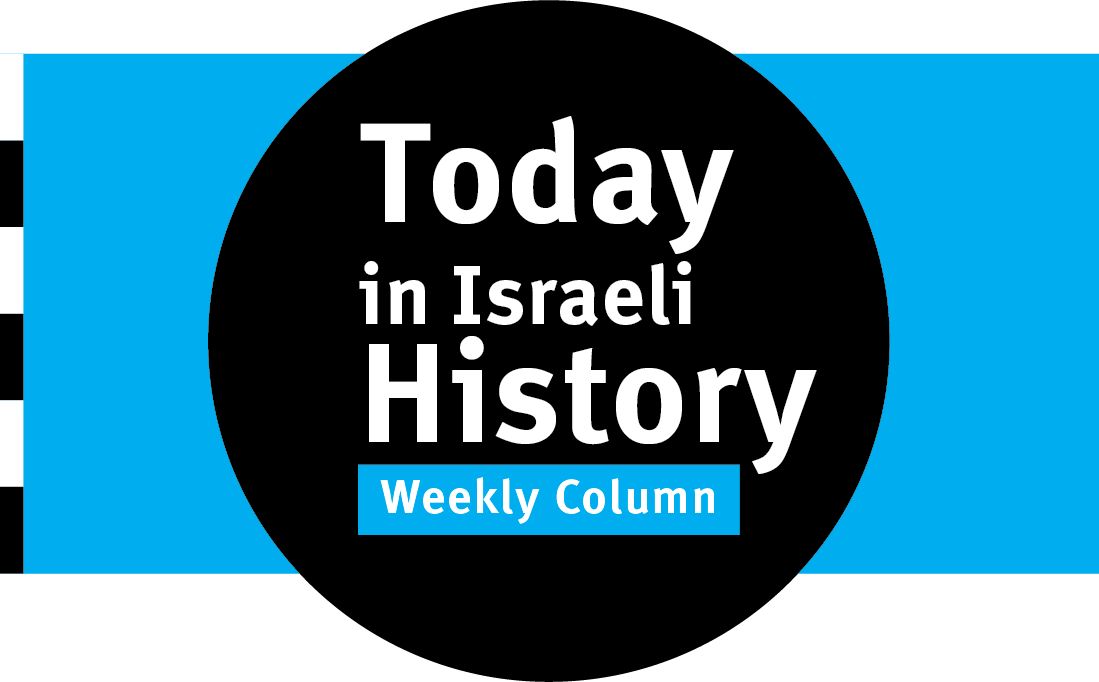July 5, 1950 — Knesset Creates Law of Return

The Knesset passes the Law of Return on the Jewish anniversary of the death of Theodor Herzl. The law offers an open immigration door to all Jews, formalizing a policy in place since the provisional government revoked the British limits on Jewish immigration in May 1948. The law is modified in 1954 to exclude those with criminal pasts who could endanger public welfare and in 1970 to try to define who qualifies as a Jew.
July 6, 1989 — Bus Attack Kills 16

A Palestinian Islamic Jihad terrorist seizes a No. 405 bus from Tel Aviv as it passes a ravine outside Jerusalem and steers it over a cliff. Sixteen people, including one American and two Canadians, are killed, and 17 others are injured. This is often seen as the first suicide attack of the First Intifada, although the terrorist survives and is one of 1,027 Palestinians released in 2011 in exchange for kidnapped soldier Gilad Shalit.
July 7, 1957 — Banker Eliezer Hoofien Dies

caption: A banknote from the Anglo-Palestine Bank includes the name and signature of Eliezer Siegfried Hoofien.
Eliezer Siegfried Hoofien, who provided the pre-state Jewish community in Palestine and then the State of Israel with a half-century of financial expertise and leadership, dies at 76. A native of the Netherlands, Hoofien became deputy director of the Anglo-Palestine Bank after making aliyah in 1912 and became general manager in 1925. Israel made the bank its financial agent in August 1948. It was renamed Bank Leumi L’Yisrael in 1950.
July 8, 1989 — Judo Champ Yarden Gerbi is Born

Judo champion Yarden Gerbi is born in Kfar Saba. Gerbi wins eight national championships in her career and rises to the top of the world rankings in May 2013. She defeats European champion Clarisse Agbegnenou of France on the way to gold at the World Judo Championships in August 2013, making her the first Israeli to win a world judo title. She wins a bronze at the 2016 Summer Olympics in Rio de Janeiro, then retires.
July 9, 1959 — Wadi Salib Riots Begin

Riots break out in the Haifa neighborhood of Wadi Salib after police officers shoot Yaakov Elkarif while trying to arrest him for being drunk and disorderly. The rioting is the first mass civil disturbance in the State of Israel. An Arab area before 1948, the neighborhood is home to new immigrants, mostly from North Africa, who experience discrimination and high rates of unemployment, poverty and crime. The rioting spreads to other cities.
July 10, 1957 — Yiddish Writer Sholem Asch Dies

Yiddish novelist and playwright Sholem Asch dies at 76 in London. Born in Russian-controlled Poland in 1880, Asch wrote in Hebrew until I.L. Peretz persuaded him to switch to Yiddish. He first visited Palestine in 1908 and wrote about the Jewish connection to the land. He moved between the United States and Europe for most of his life. He lived his final two years in Bat Yam, where his house is a museum in his memory.
July 11, 1927 — Jericho Earthquake Kills 300-Plus

A major earthquake kills 300 to 500 people and injures at least 700 others. The epicenter is believed to be near Jericho, and it is known as the Jericho earthquake of 1927. Later research concludes that the epicenter is about 30 miles to the south by the Dead Sea. The quake damages Nablus and Jerusalem, including the Church of the Holy Sepulchre and al-Aqsa Mosque, and is felt in Ramle, Lod and Tiberias.
Items are provided by the Center for Israel Education (israeled.org), where you can find more details.


